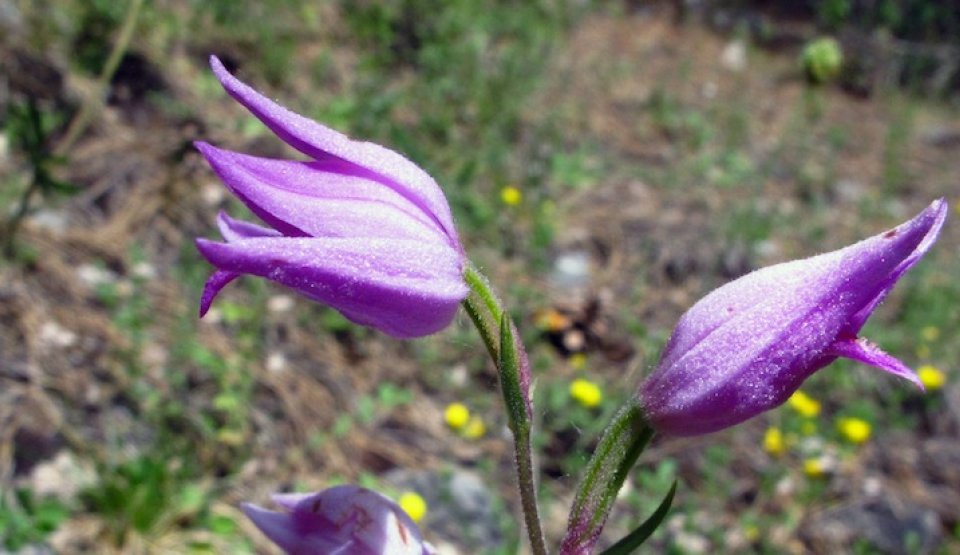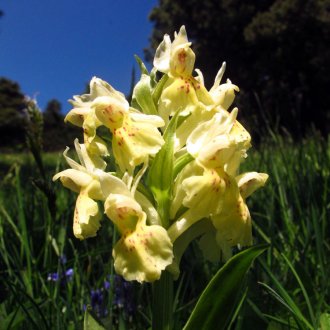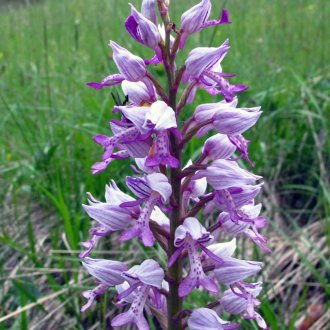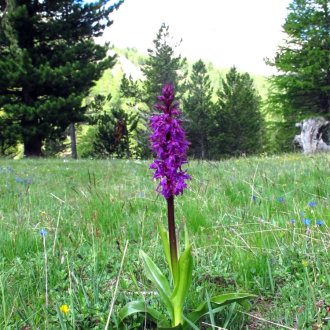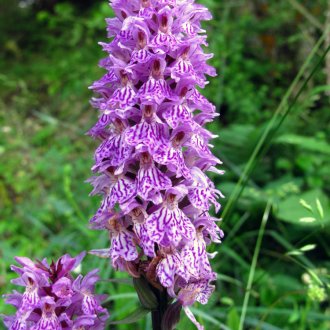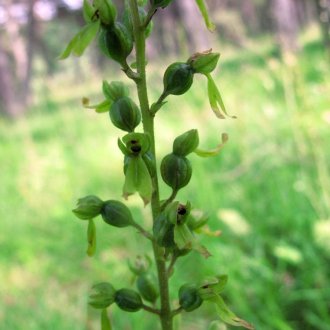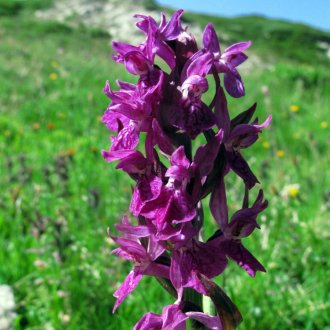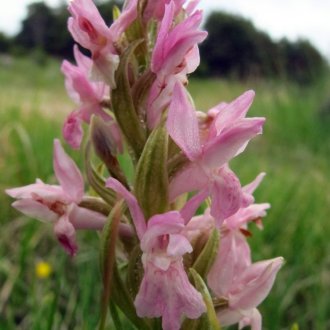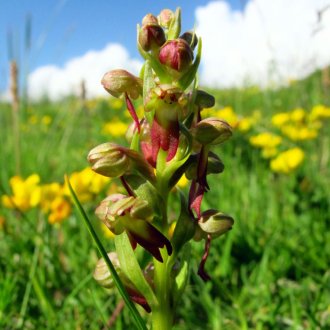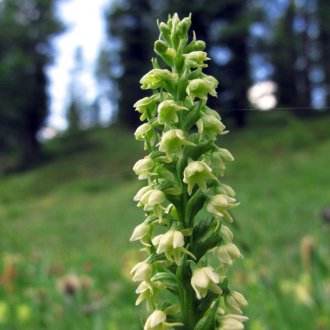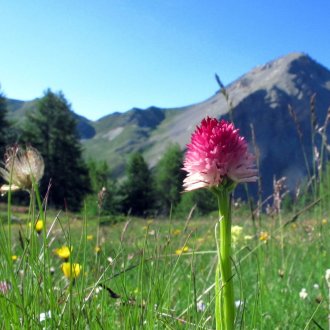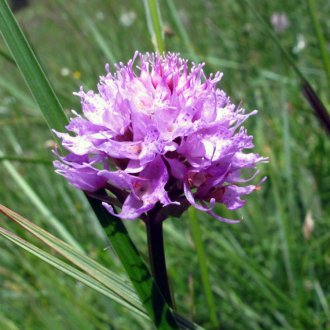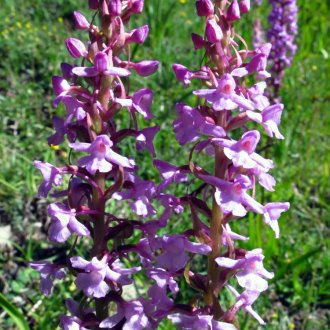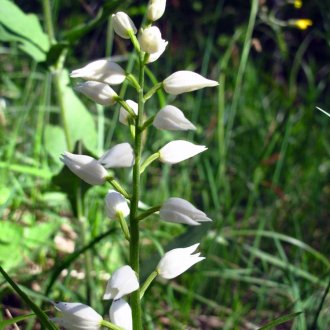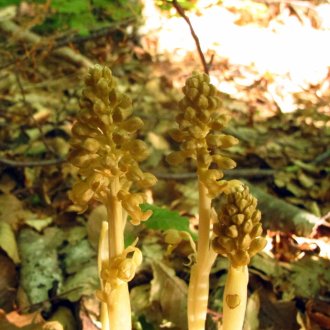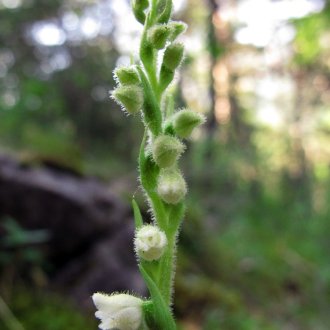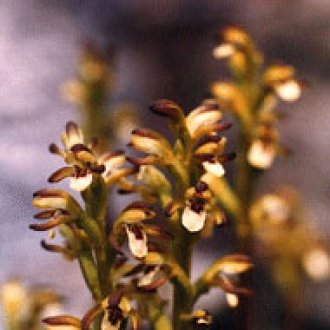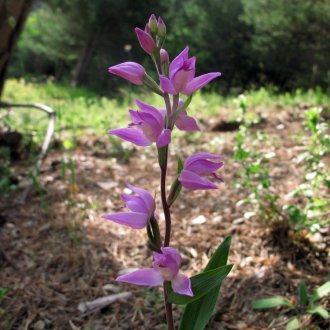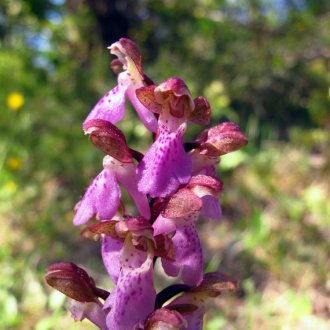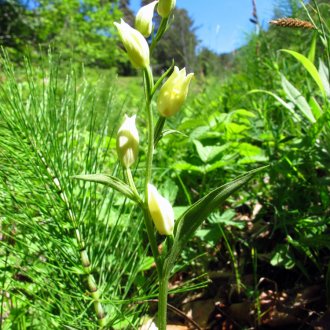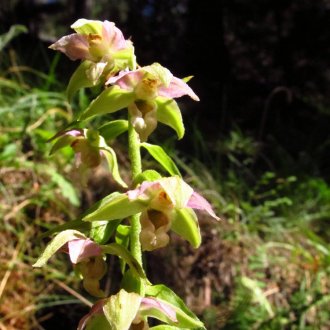
Some Queyras orchids
- More than 140 species
- Meadow orchids
- Wetland orchids
- Orchids of the upland pastures
- Woodland orchids
- Orchids of dry soils
More than 140 species
Tropical orchids have large flowers and often hang on trees, but the wild orchids of Europe are more discreet. They grow at ground level and are often small, with greenish flowers which make them difficult to pick out. But they are always very beautiful, showing a huge variety of forms and colours.
Close up, the common features of European orchids are easily identified. The inflorescence is often spike-shaped, as in the orchis or gymnadenia (fragrant orchid), or rounded, as in the nigritella (vanilla orchid) and the globe orchid. The flowers comprise six floral parts (3 petals and 3 sepals). One of the petals, the so-called labellum, is highly modified and may take on a range of different forms – the lady's-slipper orchid is an extreme case here. In the orchis genus, such as the so-called burnt orchid or the military orchid the sepals are fused together in a characteristic ‘helmet’. In the dactylorhiza genus, such as the elder-flowered orchid, or the common spotted orchid, the broad-leaved marsh orchid or the early marsh orchid, the ‘helmet’ is more open and looks more like the kind that Asterix would wear. Here the labellum is most often situated underneath the flower, except in the nigritella (vanilla orchid) and the ghost orchid where it lies on top..
Orchids flourish in all environments (one Australian variety grows and produces its flowers underground), with the exception of water. Some orchids, such as the bird’s nest orchid or the ghost orchid, grow like fungi on decomposing vegetable matter. As a result they dispense with producing chlorophyll or leaves.
In France there are more than 140 species of orchid. Certain of them, like the ophrys genus, require warmth. Several members of this group are found at lower altitudes in the Hautes-Alpes, but none is present in the Regional Natural Park of the Queyras which lies wholly above 1000 metres. The Queyras orchids have had to adapt to the very harsh conditions of the high mountains. The record for altitude in this sense is the nigritella which may grow at up to 2,500 metres. Other orchids like the lady's-slipper orchid, have become very rare because people have picked them. But most damaging of all have been modern farming techniques. In some areas the drainage of wetlands and the use of fungicides and artificial fertilisers have driven orchids to extinction. In practice every orchid seed needs a fungus to feed on in order to develop into a plant, and the elimination of fungi leads to the elimination of orchids.
Other orchids, however, are rare for different reasons. The ghost orchid, for example, which lacks leaves, grows in the forests of the Hautes-Alpes only under certain meteorological conditions. Years can pass without this plant appearing, hence its nickname of ‘goblin of the woods’.
The classification of orchids which we have used here is according to habitat, but this remains a rather arbitrary approach since certain species of orchids have adapted to more than one habitat.
Meadow Orchids
Wetland Orchids
Orchids of the upland pastures
Woodland orchids
Orchids of dry soils
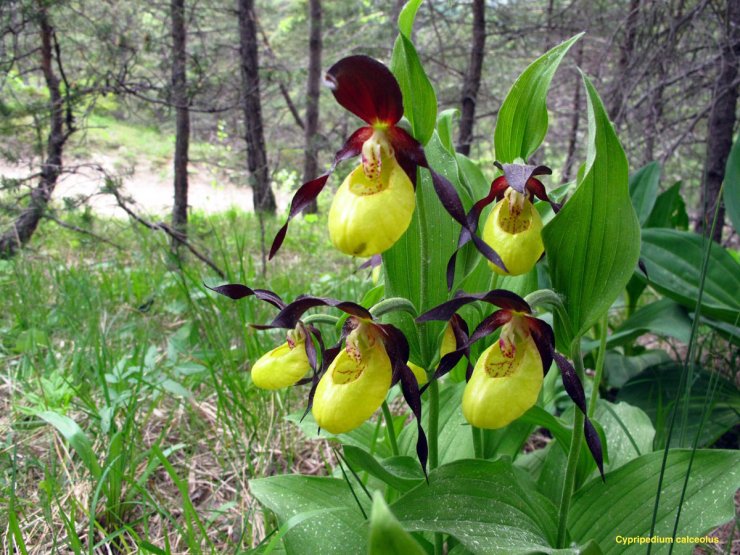
Over 140 orchid species
While tropical orchids have large flowers and often grow clinging to trees, European orchids are less showy: they are terrestrial and often very modest, sometimes with greenish flowers that make them hard to see. But they are always beautiful, demonstrating an unparalleled imagination in form and color.
On closer inspection, their common features are easy to identify: flowers often in elongated spikes, as in orchis and gymnadenias (fly orchis), or compact spikes, as in nigritelle (vanilla orchis) and globular orchis.
These flowers, which easily have 6 floral parts (3 petals and 3 sepals), have the distinctive feature of vertical symmetry.
One of the petals, the labellum, is particularly developed - that of the Sabot de Vénus is an extreme case - and takes on a wide variety of shapes.
In orchis (burnt orchis or military orchis, for example), the sepals are joined together to form a characteristic "helmet".
In dactylorhizas such as the elder orchis, Fuchs' orchis, May orchis or incarnate orchis, this "helmet" is more open and reminiscent of Asterix. The labellum is most often positioned below the flower, except in the nigritelle (vanilla orchis) and the epipogon, where it is above.
Orchids have conquered all environments, including underground (Australia has an orchid that grows and produces its flowers underground), with the exception of aquatic environments.
Some of them, such as the bird's-nest neottie and the epipogon, have chosen to live like fungi on decomposing plant matter.
As a result, they no longer need chlorophyll or leaves, and have ceased to produce them.
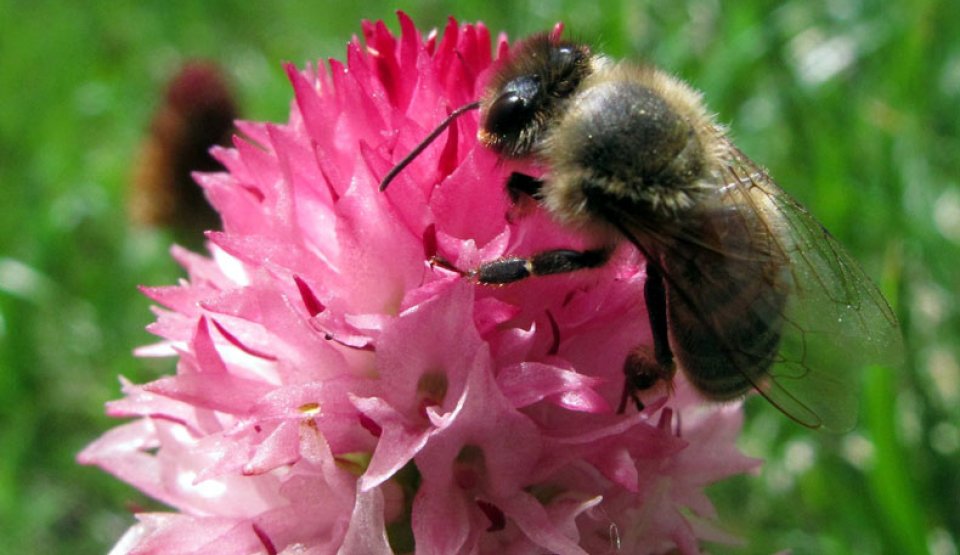

There are over 140 species of orchid in France.
Some, like ophrys, are heat-loving. Several species can be found in the lower part of the Hautes Alpes département, but not in the Queyras nature park, which is located entirely above 1,000 m.
The orchids found here have had to adapt to the harsh mountain climate.
The record for these flowers is held by the nigritelle, which can be found up to 2,500 m. Some, such as the sabot de Vénus, have become very rare, victims of excessive harvesting. But it is above all farming practices, with the drainage of wetlands and the use of chemical fertilizers and fungicides, that have caused them to decline to the point of disappearing from certain regions.
To develop, the orchid embryo needs a fungus to feed it. If the fungus disappears, so does the orchid.
But other orchids are rare for different reasons. Epipogon, for example, is leafless and only appears in the forests of the Hautes Alpes when the weather conditions are right. It can go several years without appearing, and has been nicknamed the"woodland leprechaun" for this reason.
Orchids have been classified here according to their habitat, but this distinction is inevitably arbitrary, as some species have adapted to different types of habitat.
Prairie orchids
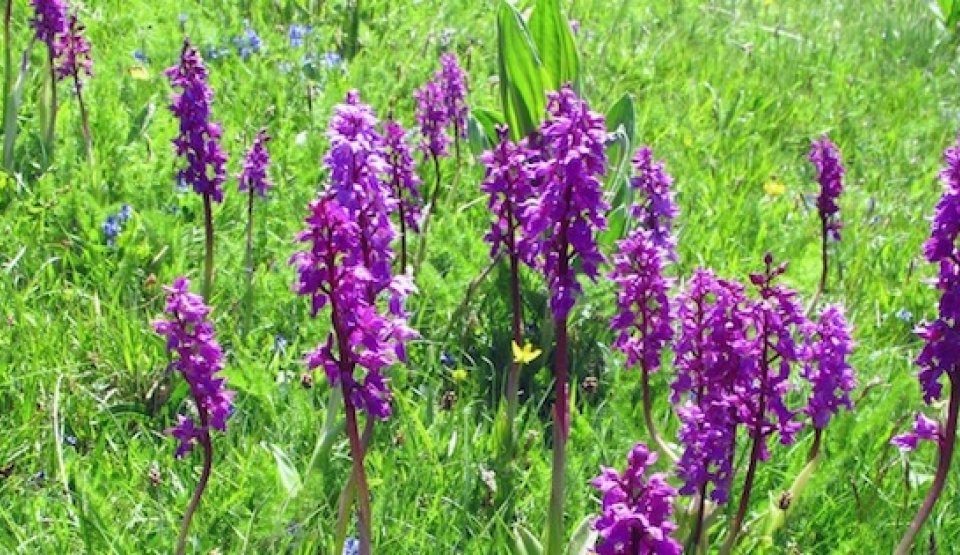
Wetland orchids
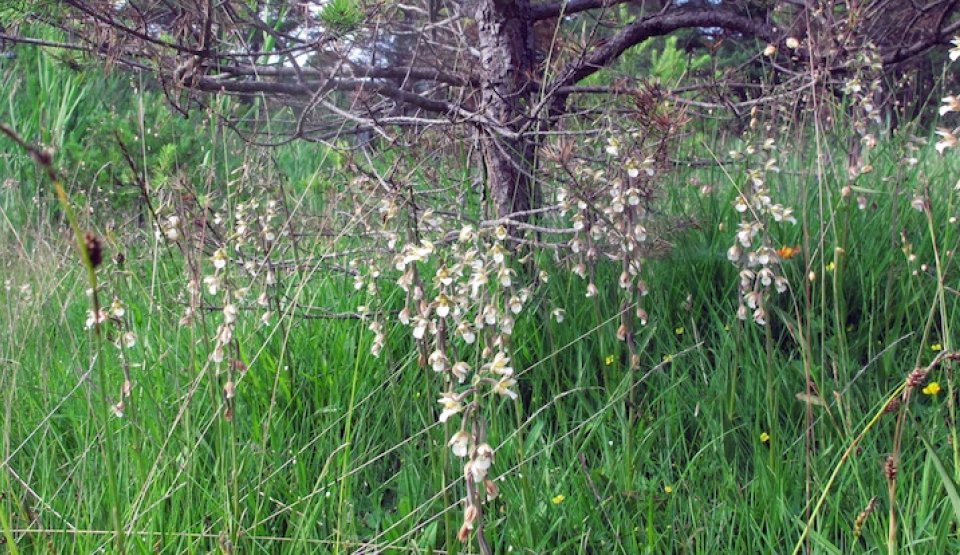
Alpine orchids

Orchids of the undergrowth
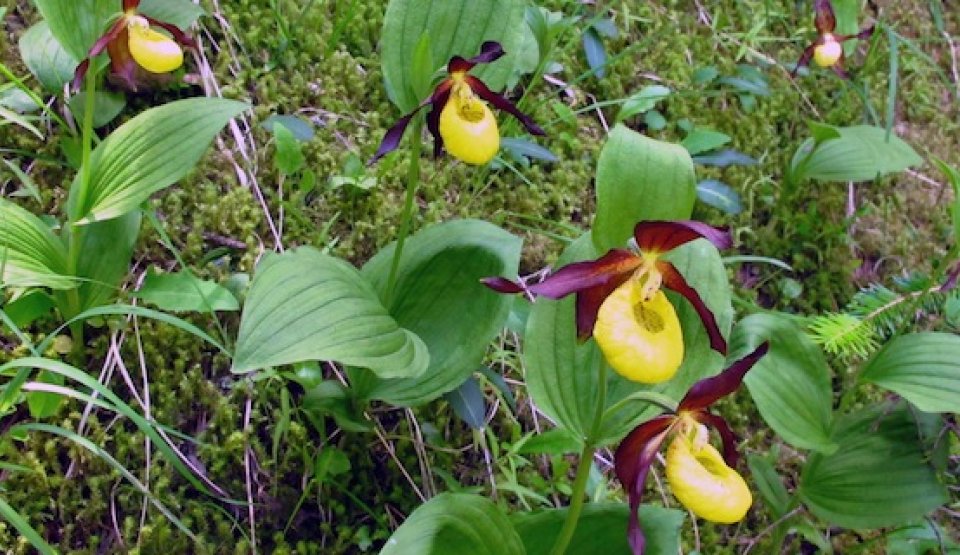
Orchids of dry places
